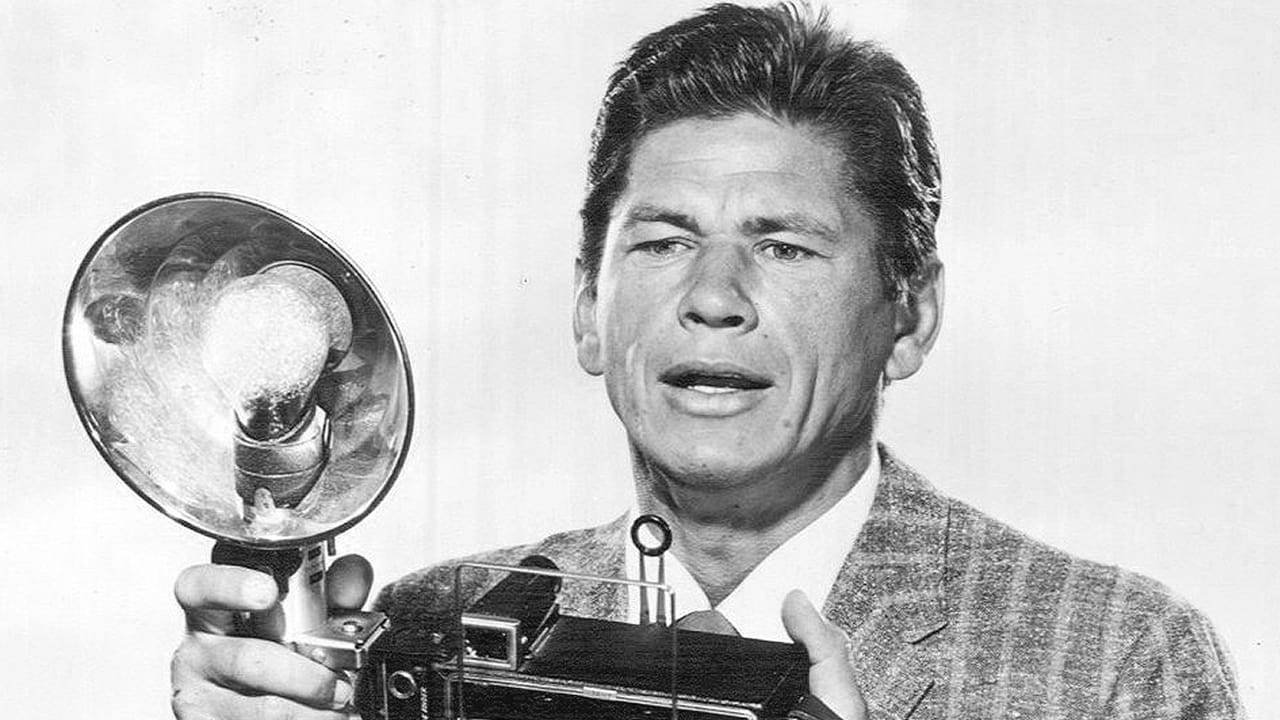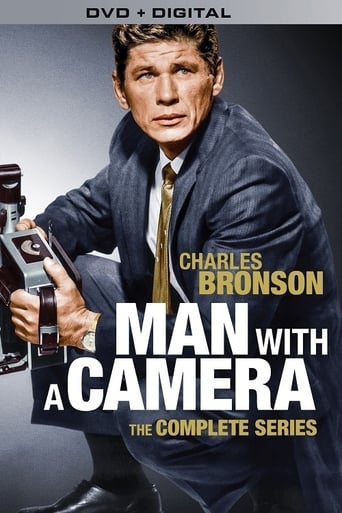

good back-story, and good acting
... View MoreThe film makes a home in your brain and the only cure is to see it again.
... View MoreI wanted to like it more than I actually did... But much of the humor totally escaped me and I walked out only mildly impressed.
... View MoreThe biggest problem with this movie is it’s a little better than you think it might be, which somehow makes it worse. As in, it takes itself a bit too seriously, which makes most of the movie feel kind of dull.
... View MoreI find this TV show quite entertaining, well paced, directed and acted. But the only thing that makes this show a torture to me is ALWAYS seeing Bronson with his f...camera, taking pictures anywhere, at any moment and for anything. That annoys me at a scale you can't even imagine. I understand why some people go on rampage against picture snatchers. I don't know if I will go through this TV series. Bronson in this character, in absolutely unbearable. His is however an actor I am fond of. But his character is so annoying with his bloodin camera. I can't stand it anymore...
... View MoreBack in 1958 when Charles Bronson starred in the 'Man With a Camera' series, even at the young age of 10 years, I found something that was both entertaining as well as educational. I had an Uncle who was a semi-professional photographer, who gave me my first camera when I was Seven ( 7 ) yrs. old, a Kodak Brownie Camera, with a flash attachment. I wanted to be in some ways like my Uncle who I admired very much. The Man With a Camera gave me my vision for the future, going places, meeting people, taking great photographs and someday doing my own processing. Now after nearly 53 years later, I still enjoy my first ambition, photography. I ran my own photographic business, doing weddings, portraits, school portraits, and sporting events. In High School I gained a nick name 'flash', because every time there was a school function, out came my camera. As time went on, I graduated from that first brownie camera, to a 35mm, a 2 1/4 x 3 1/4 press camera, to a 4x5 press camera, 120 format camera, 220 format camera, and now even a digital camera. Digital cameras are OK, they are convenient, but I still yearn for my Darkroom, doing the magic of taking a negative and creating a positive image. There is nothing like self-satisfaction in producing an item that is both pleasing to the eye, and elated knowing that I blended both light and image to become something that would be remembered for a life time in a Photograph.Its too bad that shows of this nature do not exist today. Shows of this nature, can be inspirational. I know, I became inspired to take an avenue that both gave me satisfaction and gratification.
... View MoreI've not only 'watched' the series...but watched it 'live in it's time slots'. when I was 25 years old...a young Professional Photographer myself.Charles Bronson was most-impressive in the series. He used 35-mm film cameras and Flash Bulbs, long before Electronic Flash cameras became mainstream to the public..Polaroid Cameras was not yet invented.The show sponsors were Sylvania 'Blue Dot'Flashbulbs and Kodak Films which EVERYONE used. The 'Blue Dot' was Sylvania's Trademark and when the 'dot' on the flashbulb was the color-blue...you knew you had a good bulb that was guaranteed to flash. Other manufacturer bulbs sometimes failed to flash because they were 'defective', thus losing a possible great photo at cost of the film exposure and flashbulb.The film image is captured in a split second for posterity. If you missed the shot...it was gone forever. 'Man With A Camera' got his 'shots' every time.Every photographer developed film and made prints in a darkroom or makeshift one...was exciting times in Photography.Charlie was the updated 'Weegee' (Live Free-Lance crime photographer in the 40's and 50's who used a 4x5 Press Camera and Flashbulkbs and covered New York City at night, and became an icon by doing so).Charles Bronson became a Movie Icon as result of this Great Photography series, which lead him to become the Superstar he was.This series filmed in Black & White is Historically accurate and exciting to everyone who is photography crafted. A real true-blue historical masterpiece of nostalgia.If you get the opportunity to watch it...please do...you'll be glad you did...seeing a Superhero in the making...Take care.~ ED Cherney
... View MoreI've never been a Charles Bronson fan, but 'Man with a Camera' was the role that brought him major attention. This was one of the very early series of the young ABC network, so it suffered from a low budget and poor production values, but was broadly hyped by ABC.Bronson played Mike Kovac, a former combat photographer now free-lancing in New York City, specialising in getting the photographs that other lensmen can't (or don't have the guts to obtain). Ludicrously, a lot of Kovac's assignments came from the police and newspaper editors, who never seemed to have their own photographers on staff. As this was a crime show, Kovac's assignments always embroiled him in some caper, usually involving a good-looking woman. Kovac's police liaison was Lieutenant Donovan, well-played by James Flavin but stuck with the implausible cliché (dating back to Inspector Lestrade) of the cop who has to go to the independent free-lance hero for help with all the cases the cops can't handle.One strong point of 'Man with a Camera' is that it involved the latest photographic technology, which inevitably must seem quaint from our modern standpoint. The boot of Kovac's car was converted into a portable darkroom. After he snapped his pix, he would then peel off his jacket to reveal a short-sleeved shirt (with Charles Bronson's brawny biceps). Kovacs would then ceremoniously take off his wristwatch, mix the hypo, and develop his negatives on the spot. (Wot, no Polaroids?) For special assignments, Kovac would use a miniature camera, a fisheye lens, a telephoto attachment or various other gimmicks ... all technologically accurate for the time.The dialogue in this series tended towards the gimmicky as well. In a typical climax, Kovac went into the villain's hideout (unarmed, natch), punched the crap out of him single-handed, then threw him into the street. Lieutenant Donovan comes running along just as Kovac ominously reaches into his jacket as if drawing a weapon.Donovan: "You're not going to shoot him, are you?"Kovac: "After all the trouble I went to, you're darn right I'm gonna shoot him."Then he pulls out his camera and he *shoots* the villain. Geddit? Hoo boy.As played by monotone actor Bronson, Kovac could have been a dull stereotype. He was humanised somewhat by the presence of his immigrant father Anton, to whom Kovac frequently came for advice. The individual episodes of 'Man with a Camera' tended to have photographic titles, such as 'Close-Up on Violence', 'Double Negative', 'The Picture War'. The series boasted an impressive roster of guest stars, including Frank Faylen, Grant Williams and (pre-Batgirl) Yvonne Craig. 'Man with a Camera' may well be of great interest to Bronson fans but is not otherwise notable.
... View More